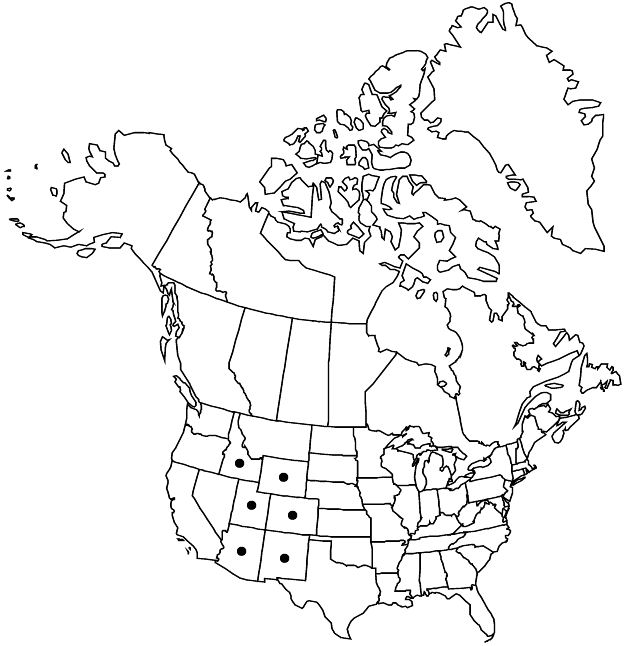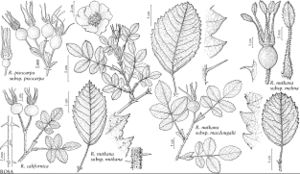Rosa nutkana subsp. melina
Novon 17: 345. 2007.
Shrubs, openly branched. Stems 4–10 (–15) dm, internodes 2–2.5 cm; prickles (distal stems and fertile branches) infrastipular, curved or hooked, often stout, internodal sometimes present, smaller, rarely erect, sometimes absent. Terminal leaflet margins usually 2+-serrate, teeth gland-tipped, abaxial surfaces glandular or eglandular. Inflorescences usually 1 (–5) -flowered. Sepals: abaxial surfaces sessile or stipitate-glandular.
Phenology: Flowering late Jun–Jul.
Habitat: Aspen, fir, spruce, and pine forest edges and clearings, stream edges and banks, brushy hillsides, peaks, ridges, grassy rocky slopes, meadows, canyon slopes
Elevation: 2500–3800 m
Distribution

Ariz., Colo., Idaho, N.Mex., Utah, Wyo.
Discussion
Subspecies melina [6x (DNA)] is endemic to high elevations of the Rocky Mountains Biogeographic Province, where it is often associated with Populus tremuloides Michaux. Curved prickles, glandular sepals, and 2- or 3-serrate leaflets help distinguish subsp. melina where it overlaps with subsp. macdougalii in southeastern Idaho and northern Utah. Significant distributional overlap occurs also with Rosa woodsii subsp. manca, which can occur in mixed or adjacent populations. Subspecies melina is generally at higher elevations, flowers somewhat earlier than subsp. manca, and is hexaploid (the latter is diploid).
Selected References
None.
Lower Taxa
"dm" is not declared as a valid unit of measurement for this property."dm" is not declared as a valid unit of measurement for this property."dm" is not declared as a valid unit of measurement for this property.
